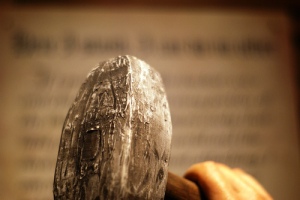In tandem with this year’s Karl Barth Online Conference, I have provided an attenuated, early “masculine biography” for those interested in this man, who was clearly the greatest theological mind of the last century. Why a masculine biography? Because, frankly, the guy wrote so little about men and masculinity. It’s more relevant to my blog this way – and yes, folks, it’s all true.

Karl Barth was born in 1886 in Switzerland, descending from a long line of pastors and tobacconists. His siblings describe him as a completely dominant older brother, using anything they did as grist for his mill. A troublesome child, “Karli” came to head a local street gang of boys, and wreaked havoc at school and in the neighborhood.
Though raised and catechized in the Swiss Reformed church, the closest thing Karl experienced as a conversion was in the pages of Immanuel Kant, the renowned philosopher. He was remarkably like his father in his theological outlook. Nevertheless, Karl rebelled against the more conservative, “positive” elements, and so studied under the master of biblical criticism, Adolf Harnack, and the pious systematician, Wilhelm Herrmann.
Known as “Skinny” to his peers, young Karl took up heavy drinking and smoking as some of his chief activities while in college. A member (and ultimately president) of the group Zofingia, he can be found in the club picture next to the beer keg. He didn’t have much of a stomach for dealing directly with abject poverty, yet championed progressive socialist causes, for which he earned grudging respect from his mates.
Finally came ordination, which was not without a little tension, considering his un-liberal father was leading the ordination service. Karl ruled the roost at his first church, at least after the senior minister left for greener pastures. For the first and only time in his life, there at Geneva he was unrivaled in his male dominance, if only because there was hardly a man to be found in the pews. Attempts at controversies – denying the bodily resurrection of Christ, preaching socialist causes, etc. – hardly phased the congregation or the regional parish. He did, however, snag a 17 year-old hottie out of his catechism class as a fiancee.
Then, in 1911, he moved to his new post, an electricity-less village called Safenwil. While the militaristic rubberstamping by his theology professors of the Kaiser’s war effort would rupture Barth’s religious hubris, his manly pride was buckling before that: there he was as a sophomore preacher in the middle of nowhere, daily confronted by the holy scriptures, and living with Fräulein Hanna and her host of cats.




 Happy Reformation Day, for those of you delivered from the concurrent secularized-Catholic holiday.
Happy Reformation Day, for those of you delivered from the concurrent secularized-Catholic holiday.